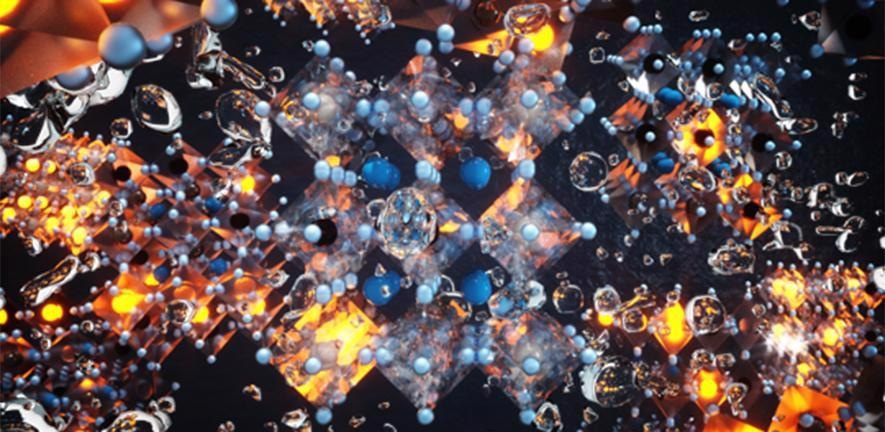Jun 8 2021
An international research team has devised a new method that could be used for making low-cost, more efficient light-emitting materials that are flexible and can be printed using ink-jet methods.
 Artist’s impression of glowing halide perovskite nanocrystals. Image Credit: Ella Maru Studio.
Artist’s impression of glowing halide perovskite nanocrystals. Image Credit: Ella Maru Studio.
Headed by the University of Cambridge and the Technical University of Munich, the researchers discovered that by swapping one out of every one thousand atoms of one material for another, they could increase the luminescence of a new material class of light emitters, called halide perovskites, by three-fold.
This doping or “atom swapping” causes the charge carriers to get stuck in a certain part of the crystal structure of the material. Within this crystal structure, these charge carriers recombine and produce light.
The study results have been published in the Journal of the American Chemical Society and could prove handy for low-cost flexible and printable light-emitting devices (LEDs) lighting, inexpensive lasers and displays for smartphones.
Today, several routine applications use LEDs, like commercial and domestic lighting, laptops, smartphones and television screens. The main benefit of LEDs is that they consume relatively less energy when compared to older technologies.
The entirety of global communication through the internet is also driven by optical signals from extremely bright light sources, which within optical fibers, transmit data at the speed of light throughout the world.
The researchers analyzed a new group of semiconductors, known as halide perovskites, in the form of nanocrystals that measure just around a ten-thousandth of the thickness of a single strand of human hair. Such “quantum dots” are highly luminescent materials—the first high-brilliance QLED TVs integrating quantum dots were recently introduced into the market.
The researchers from the University of Cambridge, in association with Daniel Congreve’s team from Harvard, who are also specialists in the development of quantum dots, have now considerably enhanced the light emitted by these nanocrystals.
The researchers replaced one out of every one thousand atoms with another—substituting lead for manganese ions—and observed that the luminescence of the quantum dots had increased by three-fold. A complete analysis using laser spectroscopy demonstrated the origin of this observation.
We found that the charges collect together in the regions of the crystals that we doped. Once localised, those energetic charges can meet each other and recombine to emit light in a very efficient manner.
Sascha Feldmann, Study First Author. Cavendish Laboratory, University of Cambridge
Felix Deschler, the senior author of the study, added, “We hope this fascinating discovery: that even smallest changes to the chemical composition can greatly enhance the material properties, will pave the way to cheap and ultrabright LED displays and lasers in the near future.”
Deschler is jointly affiliated at the Cavendish and the Walter Schottky Institute at the Technical University of Munich.
In the days to come, the team hopes to discover even more efficient dopants that will help make these sophisticated light technologies accessible to all parts of the world.
Journal Reference:
Feldmann, S., et al. (2021) Charge carrier localization in doped perovskite nanocrystals enhances radiative recombination. Journal of the American Chemical Society. doi.org/10.1021/jacs.1c01567.